With so many brands releasing so many clubs it can be hard to keep up, so in this series I’m going to go through the offering brand by brand and talk a little about what I’ve seen from them in a fitting scenario.
Today we’re having a look at Ping.
The flagship line with Ping and the one you’ve probably heard of most is G425, they released this in the woods and irons. Across the board this is a line of clubs that have high MOI. If you’re unfamiliar with MOI (moment of inertia) what it basically means is the higher the MOI of a club, the less it twists at impact, and the less it twists, the less it will be affected by off centre strike. So forgiveness in a nutshell. The woods offer 3 models, the max (the standard model), the SFT (the draw bias model) and the LST (the low spin model). This line has been the one that I’ve gone straight to if a golfer wants to straighten out their ball flight of their woods.
In the irons, Ping offer a few lines of differing sizes, the aforementioned G425 is a great iron to add speed and distance. The deep centre of gravity means that it naturally launches well so it gets great height into the ball, but it can do that with strong lofts. This means you can gain distance without sacrificing ball flight. The newest iron in the Ping family is the i59 and this thing looks amazing. A more compact head than the G425 it’s designed for a better player who still wants a little bit of help with launch and off centre strikes. It’s certainly a players profile, with much less offset and a slimmer topline but it contains much of the same tech as the G425 with tungsten weighting helping improve that all important MOI which can decrease in smaller profile irons. The latest release in the Ping iron family is the i525, a slightly larger and stronger version of the i59. This one seems to be released as a competitor in the P790 bracket for a player who doesn’t want to look down on a larger, game improvement iron, but does want to have the benefits in forgiveness and distance that these irons offer. Finally in the irons we have the Blueprint. This is the blade and it’s a small one. This is for players who really like a compact head and are very consistent ball strikers, it could blend well in a set as the short irons with the i59s in the longer irons too, but no doubt you’ll need confidence in your ball striking to play these in any sense!
Ping’s Glide wedges are some of the most underrated wedges out there and their current offering, the Glide Forged Pro, certainly deserves more attention. Designed with a “Tour Inspired” look, they are quite small heel to toe so great if you like a compact, precise look. They have a Hydropearl finish on the face which improves spin retention in wet weather and a couple of different grind options to customise them to your short game.
Ping was once a putter company and always reserves a lot of effort for making some really good flat sticks. The Ping 2021 line has a lot of variation, from the classic Anser blade, to the high MOI, large mallet head Harwood. They have a range of necks to suit differing deliveries and an insert in all putters that feels very soft. So if you like a smooth feel off the putter I’d highly recommend these.
Running alongside the woods, irons and putters is the ladies offering, the G LE 2, maybe the most asked about ladies clubs I’ve come across out there right now. Using much of the same tech as in the G425 line, the G LE 2 is more suitably weighted for ladies shafts, which are light and shorter, making sure that female golfers don’t have to compromise by having a shaft that feels comfortable and performs well while having an overly heavy mens club head on, unbalancing the whole equation.
If you’re into your tech and want to read more about what manufacturers currently have to offer, check back in here to see what I’ve found from all of the other companies’ offerings!



